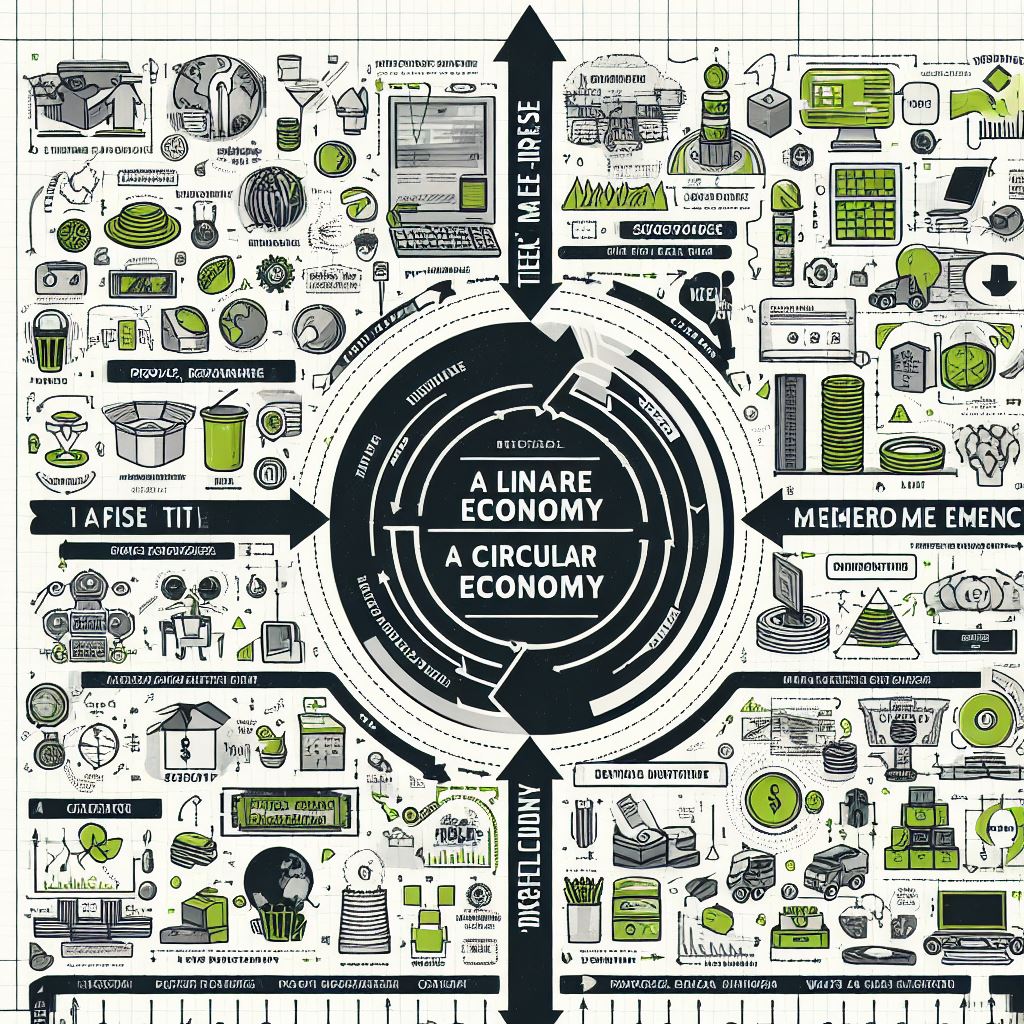
Circular Economy 101: Beyond Mere Recycling to Redesign
The phrase "circular economy" is rapidly becoming part of the everyday lexicon of businesses, policymakers, and sustainability professionals alike. But what exactly does it mean, and why should we move beyond traditional recycling methods to embrace redesign?
Definition and Principles of a Circular Economy
At its core, a circular economy is an economic system that aims to redefine growth by focusing on positive society-wide benefits. Instead of the conventional 'take, make, dispose' linear model, it ensures that products, and the materials they contain, are reused and regenerated.
Principles of the Circular Economy:
- Design for the Future: Items are designed for durability, reuse, and recycling.
- Preserve and Extend: What's already been made is used for the longest duration possible.
- Rethink Waste: Waste becomes an input, thus closing the resource loop.
- Collaborative Action: Businesses, governments, and consumers work collaboratively.
"Our ambition should not just be to prevent waste but to create a system where waste doesn't even exist." – A report from the Ellen MacArthur Foundation.
From Linear to Circular: The Imperative Shift
The importance of migrating from a linear to a circular model can't be overstated. A linear economy, which is predominantly based on a single-use model, depletes finite reserves to create products that end up in landfills or incinerated.
By embracing the principles of the circular economy, we can:
- Mitigate Climate Change: Reducing the extraction and processing of virgin materials.
- Promote Resource Efficiency: Maximizing the utility of products for as long as possible.
- Create Jobs: In areas such as refurbishing, recycling, and maintenance.
Beyond Recycling: The Role of Redesign in the Circular Economy
Traditional recycling merely delays disposal. On the other hand, redesigning for a circular economy emphasizes preventing waste altogether. This strategy includes designing products for durability, creating items that are modular and can be easily repaired, and ensuring materials can be fully reclaimed at the end of a product's life.
For instance, consider the shift from single-use plastics to sustainable materials in packaging. This isn’t just recycling old plastics – it's a complete redesign of the product experience.
Benefits of the Circular Economy in Sustainable Development
A circular design goes beyond environmental benefits. Here are some key advantages:
- Environmental: Significant reduction in carbon emissions and waste.
- Economic: Cost savings, job creation, and new market opportunities.
- Social: Addressing consumer demand for sustainable products and contributing to global sustainable development goals.
Challenges and Solutions in Circular Design
Like any transformational shift, there are hurdles:
- Design Complexity: Integrating circular principles from the outset can be intricate.
- Supply Chain Resistance: Some suppliers may resist the shift, given their investments in the linear model.
- Consumer Behavior: Convincing consumers to buy, use, and dispose of products differently.
Solutions:
- Education and Training: Equip designers with the skills needed for circular design.
- Business Model Innovation: Move from selling products to leasing or service-based models.
- Regulatory Support: Implement policies that promote and incentivize circularity.
Real-World Examples of the Circular Economy
Several businesses are pioneers in adopting a circular economy:
- Patagonia: Their "Worn Wear" initiative encourages consumers to buy used products and return old ones for recycling or resale.
- Fairphone: Creates modular phones that can be easily repaired, reducing electronic waste.
- Interface: A flooring company that sources used fishing nets to make carpet tiles.
"The future of business lies within a circular model where the lifecycle of resources is extended, utility maximized, and waste minimized." - World Economic Forum report on the circular economy.
The Power of Redesign Over Traditional Recycling
Traditional recycling is vital, but it's just a starting point. For instance, recycling aluminum saves 95% of the energy required to make the same amount of aluminum from raw materials. Imagine the potential energy savings if we can bring similar percentages to a multitude of products through redesign!
Conclusion: The Path Forward
The circular economy isn't just a buzzword—it represents a tangible roadmap for a sustainable future. By prioritizing redesign over mere recycling, businesses and societies can close the resource loop, foster sustainable development, and usher in an era of regeneration and abundance.
For those environmental enthusiasts, students of sustainable development, and business owners pondering sustainable models, this isn't just the future—it should be the present.
For further reading, consult publications from the World Economic Forum, peer-reviewed academic papers on sustainability, and case studies from businesses that have seamlessly incorporated circular economy principles.
Business

